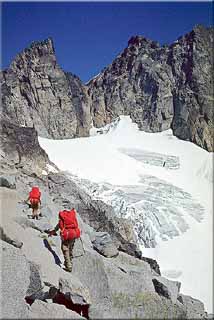These geologists are exploring granite rocks on a mountain ridge.
Scientists Who Study Rocks
Geology is the study of rocks and geologists are the people who study them!
There are many different types of geologists.
- Mineralogists study minerals.
- Petrologist study rocks.
- Structural geologist study how plate
tectonics moves and squishes rocks.
- Paleontologists study Earth
history and fossils.
- Geomorphologists study how
the land surface is shaped by water, wind and ice.
What is a geologist like? Well, they are all very different. Click on the links
below to get to know some famous geologists.
- Florence
Bascom was a mineralogist and petrologist.
- Charles
Darwin was the first scientist to publish the theory of evolution.
- Stephen
Jay Gould expanded Darwin's theory with his own ideas.
- Friedrich
Mohs was the mineralogist who created a way to identify minerals by their
hardness.
- Leonardo
da Vinci did a little bit of everything! He was a famous artist and also
discovered how sedimentary rocks and fossils form.
Last modified March 30, 2009 by Lisa Gardiner.
You might also be interested in:

Minerals are the building blocks of rocks. There are many different types of minerals. All of them are solid and all are made of atoms of elements. Minerals can grow even though they are not alive. Most
...more
Many forces change the surface of the Earth over time. The largest force that changes our planet's surface is movement of Earth's outer layer in a process called plate tectonics. As shown in this picture,
...more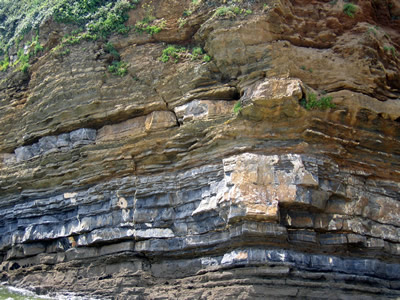
Geologists have been studying a new way to learn where sedimentary rocks formed during the Paleozoic Era. Balil Haq, a marine biologist, explains that scientists are using something called a sediment curve
...more
Scientists have learned that Mount Hood, Oregon's tallest mountain, has erupted in the past due to the mixing of two different types of magma. Adam Kent, a geologist at Oregon State University, says this
...more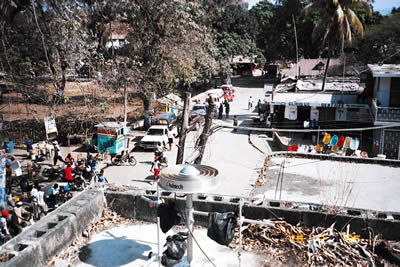
A team of scientists from the United States was invited to visit Haiti in late January 2010 to look into the cause of the magnitude 7 earthquake that happened there. While there, the geologists will collect
...more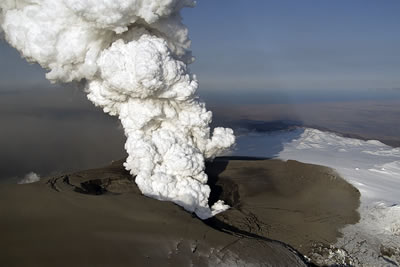
In the spring of 2010, the eruption of a volcano called Eyjafjallajökull in Iceland cancelled many flights in Europe. Eyjafjallajökull is a glaciovolcano, which means it's a volcano that is covered by
...more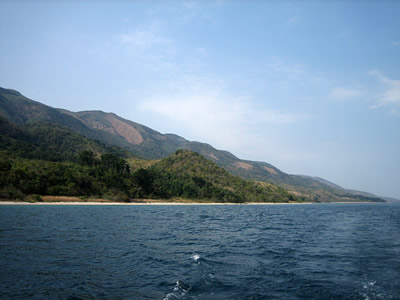
Geologists think that the waters of Lake Tanganyika, a long lake located in East Africa, has experienced a huge amount of warming in the last 100 years. Currently, the surface water of this lake is the
...more


